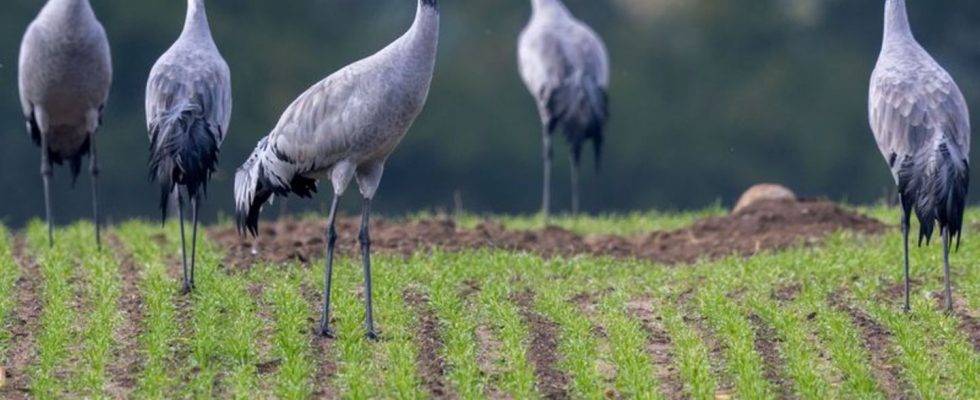Animals
Warm autumn affects wildlife
The German Nature Conservation Association (Nabu) is observing changes in migratory behavior in cranes. photo
© Jens Büttner/dpa
Too warm for hibernation? Are the migratory birds late? The mild autumn throws the wildlife out of rhythm. This may cause problems for some species.
According to experts, the mild autumn can disrupt the rhythms of animals – with far-reaching consequences. Many Birds, especially short-distance migrants such as starlings, are not yet on their way to the Mediterranean region, explained biologist Angelika Nelson from the nature conservation association LBV. The Nature Conservation Association of Germany (Nabu) is also observing a change in migratory behavior in cranes: This year they stayed longer at the resting places in northern and eastern Germany and only moved to the south with a delay.
The LBV calls for more efforts to protect the climate. The changes over the course of the year could have far-reaching consequences for ecosystems, explained Nelson. “Relationships between different living beings that have been established over the years are getting out of sync.” For hedgehogs, for example, it may still be too warm for hibernation. However, it would be more difficult for them to find food because insects, spiders and worms are already hiding in protected places. According to the biologist, bats also still fly around looking for food.
Long-distance migrants are at a disadvantage
Experts like Wolfgang Fiedler from the Max Planck Institute for Behavioral Biology in Radolfzell on Lake Constance are observing a clear trend that short-distance migrants are changing their departure times depending on the weather and are sometimes returning from their winter quarters earlier. The long-distance migrants, on the other hand, are pronounced hikers – and it looks as if they are now at a disadvantage, says Fiedler. “It is striking that the species whose numbers are declining the most are also the ones that migrate the furthest and react the weakest to an early spring.”
The late returners may not be able to find suitable nesting sites in the spring because they are already occupied, Nelson said. The early returnees could also start breeding earlier in the year – this could become a problem for the cuckoo, for example, when it comes from its winter quarters, says Nabu expert Martin Rümmler. “The small window of opportunity in which he could have smuggled an egg into a strange nest is already closed.”
More and more people don’t move at all
Basically, there are more and more birds that stay in Germany even in winter. An example of this is the white stork. “The urge to migrate is still there. But there are individuals who deviate from it. This creates a new migratory behavior,” said Rümmler. The reasons for this have not yet been fully researched. The chiffchaff can also increasingly overwinter in this country, said Fiedler. There used to be observations of the warbler in winter every few years, but now it is being seen in more and more places.
Classic winterers such as blue tits and great tits would have to share the food that is scarce in the cold season with other species, said Nelson. However, global warming could also mean that songbirds such as tits and blackbirds from Scandinavian countries no longer come to us as winter guests, but instead stay in the north, Rümmler pointed out. This is suggested by observations of waterfowl such as ducks and coots, added Fiedler. “It looks as if they no longer make the long journey from northeastern Europe to the large lakes in the foothills of the Alps.”

